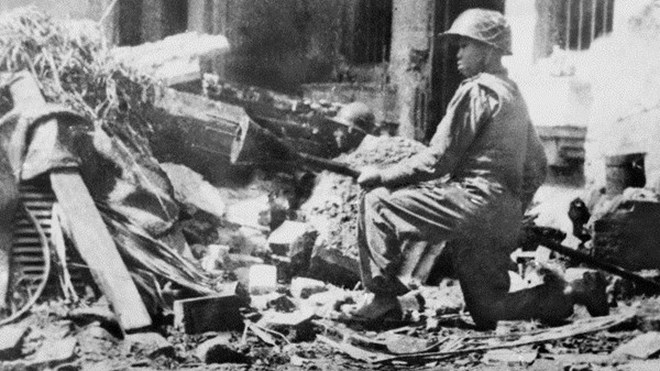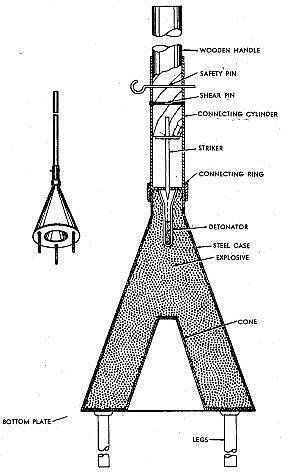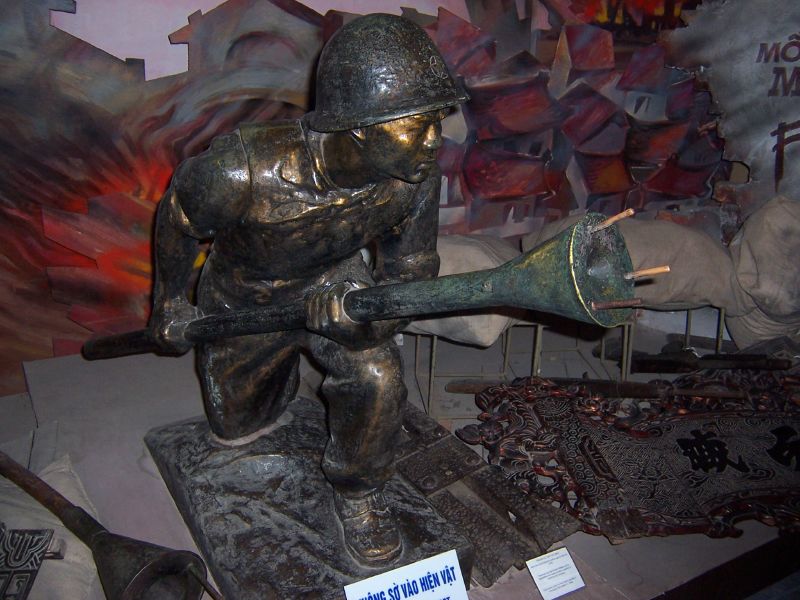During WWII, Japan was famous for its suicidal attacks against its enemies. Although to many this may seem strange, Japan understood the overwhelming odds they faced and concluded that traditional warfare was not enough to stop the US. Also, Japanese military culture regarded self-sacrifices in combat as an honorable end that ensured a heroic legacy. These attacks were carried out in various different ways. One piece of equipment used towards the end of WWII was the lunge mine, which would be used in a suicidal attack against enemy tanks.
Suicide attacks

Suicide attacks were seen as a costly but effective way to hamper the enemy, after all, a single Japanese aircraft laden with bombs could sink a US aircraft carrier. Japanese Special Attack Units that specialized in their own unique forms of attacks were set up.
The most famous Japanese suicide missions were kamikaze attacks. Kamikaze pilots used their aircraft, which was usually filled with explosives, as human-guided missiles. When successful, kamikaze attacks were extremely effective, but the aircraft were usually destroyed before reaching their target or the pilot was killed by the hail of anti-aircraft fire.
To begin with, conventional Japanese aircraft were used in kamikaze attacks, but as the practice matured, dedicated aircraft were designed, like the rocket-powered Ohka.
Suicidal attacks were used on the ground too, as seen with banzai charges, which saw swarms of Japanese troops rush enemy positions when defeat seemed inevitable. Naturally, these ended in devastating losses for both sides.
Other types of suicide attacks used boats, manned torpedoes, and midget submarines.
As mentioned, dying in combat was regarded as a heroic and honorable death. This idea was heavily reinforced and romanticized by wartime propaganda.
The lunge mine

Compared to their European counterparts, Japan often lacked powerful anti-tank weaponry during the war. To make up for this, tactics and equipment were created to help infantry deal with the threat of enemy tanks.
One method was with the lunge mine, a 2-meter long pole tipped with an explosive charge. These weapons were first encountered by the US in 1944 when Japan was becoming increasingly desperate.
The wooden pole made up the physical bulk of the lunge mine and served as the handle. At the end, a shaped explosive charge (essentially a HEAT charge, similar to the Panzerfaust) was located in a conical metal housing. The flat base of the housing had three metal legs welded to it. The legs kept the charge at the optimum distance from the armor for maximum penetration.
In total the lunge mine weighed 6.5 kg and contained 3 kg of explosives.
The wooden handle slid into the metal housing via a tube. The handle was stopped from sliding further into the housing by a safety pin. Once the safety pin had been removed, the pole was free to slide into the explosive housing, triggering the detonator.
To use the device, a soldier would remove the safety pin and charge at a tank, explosive tip first. The soldier, carrying the device with two hands, would slam the explosive flush against the target, causing the handle to slide into the housing and trigger the detonator. The explosion would kill the user, and hopefully destroy the tank.
Despite its rather primitive appearance and operation, the lunge mine, when used correctly, was surprisingly capable. It could penetrate 150mm of armor at 90º, easily enough to blast through the 38mm side armor of the M4 Sherman.
Japanese forces versus tanks
The lunge mine was used as a part of Japan’s wider set of tactics against armored vehicles. This involved luring or waiting until a tank is in a vulnerable position, launching an attack to scatter the tank’s infantry support, and then moving in to destroy it.
Simply knocking the tracks off a tank to disable it was usually enough, as the Japanese learned the crew would quickly flee with the hopes of recovering it later. This may be achieved with anti-tank guns if available, or with weapons like the lunge mine and makeshift devices.
Like the lunge mine, most of these improvised methods involved suicide.
Sometimes a soldier would run at a tank with an explosive vest, climbing onto or under the vehicle before detonating the device. To ensure the vehicle was disabled, another technique was to dive under the tank’s tracks while wearing an explosive vest.
More From Us: 4,000 Sea Mines Were Set Off By The Sun During the Vietnam War
A more devastating attack involved a Japanese soldier sitting in a foxhole in the path of an enemy tank. Between his knees would lie an aircraft bomb, which he would trigger when the tank was directly overhead.
Success or failure?
US reports on encounters with the lunge mine indicate it was a rather unsuccessful weapon. When a soldier managed to place the device on a tank it was extremely effective, but they were usually killed before this happened. Like many other suicidal tactics employed by the Japanese during WWII, their psychological effect was much greater than their strategic impact.
